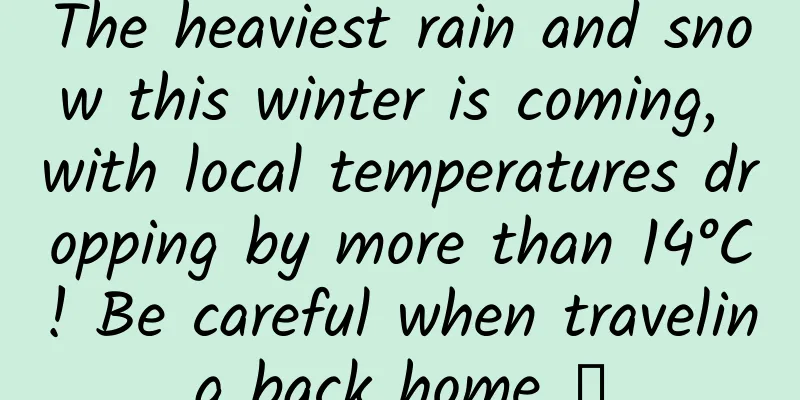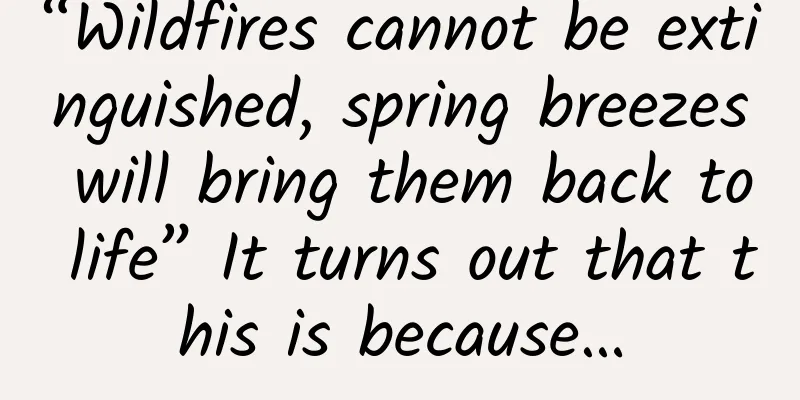The heaviest rain and snow this winter is coming, with local temperatures dropping by more than 14°C! Be careful when traveling back home →

|
Central Meteorological Observatory Today (January 23) 6:00 Blue cold wave warning issued This is the first cold wave warning this year. At 18:00, the Central Meteorological Observatory continued to issue a blue warning for cold waves: It is expected that from 20:00 on January 23 to January 27, the temperature in most parts of China will drop by 8-12℃ successively, and the temperature drop in the eastern part of Northwest China and western North China may reach more than 14℃ . The above-mentioned areas will be accompanied by northerly winds of 4-6, with gusts of 7-9. From January 26 to January 27, there will be strong winds of 6-8, with gusts of 9-11 in the eastern and southern seas of China. On the morning of January 28, the minimum temperature of 0℃ will be pushed southward to the area from northern Yunnan to southern Jiangnan. It is expected that from 20:00 on January 23 to 20:00 on January 25, northern Xinjiang, central and northern Tibet, most of Qinghai, most of Gansu, southern Ningxia and other places will successively drop by 8-10℃, among which some areas in northern Xinjiang, northern Tibet, western Gansu and other places may drop by more than 12℃ . There will be 5-7 winds and 7-9 gusts in northern Xinjiang and eastern Northwest China, 5-7 winds and 8-10 gusts in most of Tibet, central and southern Qinghai, western Sichuan Plateau and other places. Image source: China National Meteorological Administration What are the characteristics of this cold wave? This cold wave will bring rain and snow over a large area, and parts of the eastern part of Northwest China and North China will experience heavy to severe snowfall, with the characteristics of wide impact range, heavy local snowfall, and drastic temperature changes. After comprehensive assessment and emergency consultation, the China Meteorological Administration has initiated a Level III emergency response to major meteorological disasters (cold wave, blizzard) . Which roads are affected during the Spring Festival travel rush? This cold wave rain and snow process It is the peak season for returning home during the Spring Festival Great impact on Spring Festival travel The main impact period is from the 24th to the 27th If you choose to drive back home Please be aware of weather changes Reasonable travel plans January 24-25 The cold wave rain and snow process will have the largest impact. More than ten provinces in the central and eastern regions will be affected by snow or sleet, especially the traffic in the eastern part of the northwest, North China, western Huanghuai, and southwest regions will be significantly affected. January 26-27 The rain and snow weather will have a major impact on traffic in the northeast and southwest regions . It is expected that there will be a high risk of snow accumulation and road icing on highways such as Daguan, Danxi and Suiman in Inner Mongolia, Liaoning, Jilin and Heilongjiang. In addition, sections of the Beijing-Kunming, Lanzhou-Haikou, Shanghai-Kunming, Hangzhou-Ruili and other expressways in Sichuan, Guizhou and Yunnan in the southwest region will also be affected by rain and snow , which may lead to traffic blockage or congestion. Blizzard Weather Defense Guide ⚠️Before the blizzard 1. Pay attention to weather warning forecasts and traffic information such as highway closures and airport delays, and adjust travel plans in a timely manner. 2. Be prepared for cold weather and keep warm, and store enough food and water. 3. Move from dangerous or unstable buildings to a safe area. ⚠️When the blizzard comes 1. If you are indoors, try not to go out and do not rush to go out to clear the snow to avoid hypothermia. 2. Use heating equipment correctly. If you use coal for heating, keep the room ventilated to avoid carbon monoxide poisoning. 3. If you must go out, you can change into non-slip shoes with deep grooves. On slippery roads, you can walk like a penguin, with the sole of your foot on the ground, walking slowly and in small steps, keeping a fixed pace, and swinging your hands back and forth to maintain balance. 4. Try to choose public transportation when traveling. If you travel by electric vehicle or bicycle, do not inflate the tires too much, which can increase the friction between the tires and the ground and prevent slipping. 5. If you are driving, please slow down and do not change lanes to overtake. The safe braking distance in snowy weather is longer, and the driver should keep a distance of 2 to 3 times the normal distance from the vehicle in front. 6. If your vehicle is trapped by a snowstorm, try to stay in the car and call for help. ⚠️After the blizzard ends 1. When going out after snow, try to wear flat shoes and stay away from motor vehicle lanes to avoid accidents caused by brake failure of motor vehicles. 2. If you fall on a slippery road, try to use your hands and elbows to support yourself on the ground to avoid injuring important parts of the body such as the brain. Comprehensive sources: Central Meteorological Observatory, National Emergency Broadcasting, Guangming.com, etc. |
Recommend
FAW-Volkswagen's volume and price have collapsed. It's time for Chinese companies to rescue it.
FAW-Volkswagen, once the king, sold 124,000 vehic...
A fresh stream in the live broadcast industry, celebrities’ live broadcasts should be the transmitters of positive energy
When it comes to online live streaming, Internet ...
Confessions of a mediocre programmer
[[136897]] Jacob Kaplan-Moss is the co-creator an...
Case Analysis: How I was "cheated" into buying a monthly membership for Daily Fresh
It is important to make users feel that the servi...
Advanced Operations: How to design a user value system?
1. What is the user value system? The user value ...
India's richest man is worth more than Buffett and is the only Asian among the top ten richest people in the world! Worth $70.2 billion
According to the Bloomberg Billionaires Index, In...
A piece of ginkgo leaf you picked up may come from billions of years ago
As the temperature gradually drops, the ginkgo be...
Universal data analysis rules, master the essence of analytical thinking, and be proficient in multiple types of business scenarios
Universal data analysis rules, master the essence ...
The 6 core components of fission marketing!
Many activities seem to have been done, and time ...
Marketing promotion plan for the May Day event!
Labor Day is coming soon. Have you thought about ...
How to open a WeChat mini program store? How to open your own store in WeChat Mini Program?
How to open a WeChat mini program store? How to o...
iOS: How to catch exception?
Table of Contents 1. System Crash 2. Processing s...
Radium toothpaste, radium chocolate, radium water... You will never imagine how crazy humans are for "tonics"
In addition to the "radiation" mentione...
Incredible! This is how the world looks like to the blind and colorblind...
Reviewers of this article: Tao Ning, PhD, Associa...
Short video APP product analysis report!
The structural framework of this article is shown...









